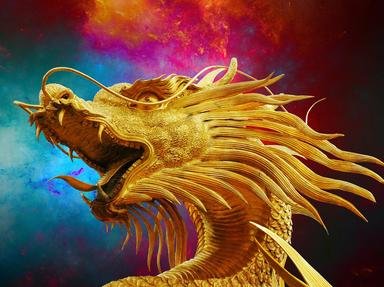Quiz Answer Key and Fun Facts
1. European settlers first heard of the bunyip from stories told them by local indigenous people in the 19th century. Which of these was NOT a place where bunyips were commonly said to dwell?
2. It has been suggested that the indigenous legends of bunyips may be based on tribal memories of extinct Australian megafauna such as which of these?
3. In 1845, the word bunyip was first used in print in 'The Geelong Advertiser', as part of a story about the discovery of an unusual bone. According to this story, the bunyip appears to be a cross between which pair of animals, both native to Australia?
4. According to a story collected on Stradbroke Island, Queensland, Biami the Spirit punished a tribesman by turning him into the Bunyip. What crime had the tribesman committed?
5. According to a legend collected in the Illawarra region in 1933 by C. W. Peck, the friendship between Bunyip and a representative of another species that was not hunted for food by humans posed a danger to this special safety, and had to be broken up. What cuddly marsupial was the subject of this story?
6. Catherine Stow's 1930 book 'Woggheeguy: Australian Aboriginal Legends' had a story about a creature called a Bunyee Bunyee, presumably a regional variant on the name Bunyip. This creature lurked in a particular lagoon, from which it trapped unwary young hunters. What did it do with them after their capture?
7. According to an ostensible indigenous legend included in the 1934 edition of 'The Department of Education New South Wales Reader', a man who captured a young bunyip and tried to take it home with him was turned into an aquatic bird found in the southern parts of Australia. Which of these was it?
8. In 1916, 'The Bunyip, or the Enchantment of Fairy Princess Wattle Blossom' appeared on the Sydney stage, opening in December. What type of theatrical performance, traditionally performed at Christmas, was this?
9. In the 1957 children's musical 'The Bunyip and the Satellite', the Bunyip was portrayed as a gentle and wise creature, advising children how to defeat the wicked Bush Fire Spirit. The actor who played the part of Bunyip was later to become better known as a suburban housewife turned superstar named Edna Everage. What was his name?
10. 'The Bunyip (Bunyip Moon)' was a song on the soundtrack of a 1977 animated movie about a little girl who gets lost in the Australian outback, and is befriended by a number of friendly marsupials. Which of these movies was it?
Source: Author
looney_tunes
This quiz was reviewed by FunTrivia editor
LadyCaitriona before going online.
Any errors found in FunTrivia content are routinely corrected through our feedback system.

